Fiche technique
- Fabricant : Universal Audio
- Modèle : harrisson 32C eq
- Série : UAD Plug-In
- Catégorie : Egaliseurs paramétriques logiciels
- Autres dénominations : harrisson 32c eq, harrisson32ceq, harrisson 32 c eq, harrisson32 ceq, harrisson32c eq
Nous n'avons pas de fiche technique sur ce produit
mais votre aide est la bienvenue
»
Vidéos
Avis utilisateurs
4.5/5(2 avis)
5
50 %
4
50 %
3
2
1
Une belle couleur (de son)
Publié le 04/12/20 à 12:31Un égaliseur qui me permet de trouver "le son" plus vite que son ombre ou plus vite que la vitesse du son.
Je l'utilise essentiellement en traitement d'instruments acoustiques, sur une tranche de guitare folk au moment du mixage (je suis principalement guitariste).
Il possède deux filtres coupe bas et coupes hauts extrêmement efficaces lors du traitement d'instruments plus étroit en plage de fréquences comme un charango, un banjo etc
Egaliseur paramétrique quatre bandes donc, avec un potard du choix de la fréquence et un potard de gain : Low 40-600 Hz, Low-Mid 200 Hz à 3,1 kHz, Hi-Mid 400 Hz à 6 kHz) et High 900 Hz à 13 kHz. Il y a un bouton d'inversement de phase, un bouton...…
Je l'utilise essentiellement en traitement d'instruments acoustiques, sur une tranche de guitare folk au moment du mixage (je suis principalement guitariste).
Il possède deux filtres coupe bas et coupes hauts extrêmement efficaces lors du traitement d'instruments plus étroit en plage de fréquences comme un charango, un banjo etc
Egaliseur paramétrique quatre bandes donc, avec un potard du choix de la fréquence et un potard de gain : Low 40-600 Hz, Low-Mid 200 Hz à 3,1 kHz, Hi-Mid 400 Hz à 6 kHz) et High 900 Hz à 13 kHz. Il y a un bouton d'inversement de phase, un bouton...…
Lire la suite
Un égaliseur qui me permet de trouver "le son" plus vite que son ombre ou plus vite que la vitesse du son.
Je l'utilise essentiellement en traitement d'instruments acoustiques, sur une tranche de guitare folk au moment du mixage (je suis principalement guitariste).
Il possède deux filtres coupe bas et coupes hauts extrêmement efficaces lors du traitement d'instruments plus étroit en plage de fréquences comme un charango, un banjo etc
Egaliseur paramétrique quatre bandes donc, avec un potard du choix de la fréquence et un potard de gain : Low 40-600 Hz, Low-Mid 200 Hz à 3,1 kHz, Hi-Mid 400 Hz à 6 kHz) et High 900 Hz à 13 kHz. Il y a un bouton d'inversement de phase, un bouton d'activation des filtre HPF et LPF et un bouton d'activation de l'EQ 4 bande. La possibilité de régler le facteur Q de la bande Low en cloche ou plateau, pour les trois autre bandes, cela est automatique et naturel.
Mes instruments sont à chaque fois égalisés et compressés à la prise mais cet outils me permet d'affiner mes réglages, et de trouver leur présence "juste" dans le mix. Je suis très surpris par la coloration de cet EQ qui apporte des détails significatifs sur ma guitare folk, dans le milieu-haut du spectre particulièrement ente 3k et 9k, c'est juste PERFECT.
Il est très peu gourmand en ressource DSP (9%) est s'intègre parfaitement dans Luna en dessous d'un Tape Oxyde ou un Studer, on peut le mettre facilement sur toutes les pistes !
Je l'utilise essentiellement en traitement d'instruments acoustiques, sur une tranche de guitare folk au moment du mixage (je suis principalement guitariste).
Il possède deux filtres coupe bas et coupes hauts extrêmement efficaces lors du traitement d'instruments plus étroit en plage de fréquences comme un charango, un banjo etc
Egaliseur paramétrique quatre bandes donc, avec un potard du choix de la fréquence et un potard de gain : Low 40-600 Hz, Low-Mid 200 Hz à 3,1 kHz, Hi-Mid 400 Hz à 6 kHz) et High 900 Hz à 13 kHz. Il y a un bouton d'inversement de phase, un bouton d'activation des filtre HPF et LPF et un bouton d'activation de l'EQ 4 bande. La possibilité de régler le facteur Q de la bande Low en cloche ou plateau, pour les trois autre bandes, cela est automatique et naturel.
Mes instruments sont à chaque fois égalisés et compressés à la prise mais cet outils me permet d'affiner mes réglages, et de trouver leur présence "juste" dans le mix. Je suis très surpris par la coloration de cet EQ qui apporte des détails significatifs sur ma guitare folk, dans le milieu-haut du spectre particulièrement ente 3k et 9k, c'est juste PERFECT.
Il est très peu gourmand en ressource DSP (9%) est s'intègre parfaitement dans Luna en dessous d'un Tape Oxyde ou un Studer, on peut le mettre facilement sur toutes les pistes !
Lire moins
00
»
Une Grande EQ
Publié le 29/02/12 à 07:26Download authorisation for your UAD card and you're good to go.
SUITABILITY/PERFORMANCE
Can't say enough good things about the UAD plugs stability on OSX or PC.
OVERALL OPINION
The Harrison 32C is the EQ channel module from the prestigious Harrison 4032 console. Countless hit records have been made with Harrison consoles, with artists from Abba to Sade. Most notably, the 4032 is famous as the mixer from which many Michael Jackson records including Thriller—the best-selling album of all time—were made. An original 4032 still resides in Florida with Thriller engineer and Bill Putnam protégé Bruce Swedien, where he continues his love affair with the desk he calls “marvelous sounding.” Universal Audio’s plug-in version of the all-important 32C EQ module is measured from Mr. Swedien’s personal console. This colorful 4-band EQ with high and low cut fil- ters will impart the same “warm and rich sound” from his Harrison, and will impart the same “impact, sonic clarity and creativity” as he experienced mak- ing some of the best-loved records of our time.
The Harrison 32C contains four overlapping parametric peaking bands. Each band has fully sweepable Frequency and Gain controls. Instead of traditional Q controls, the 32C has special circuitry that, according to the original hard- ware documentation, “automatically adjusts the effective bandwidth under all conditions.” This dynamic property, and the interplay between the overlap- ping bands, contribute to the device’s musicality and unique sonic signature.
The low EQ band can be switched from peak to shelf mode, and high/low pass filters are available. Additional “digital only” features not included on the original hardware include gain, phase invert, and a global power switch. An SE version is also provided for higher instance counts.
The UAD Harrison 32C SE is derived from the UAD Harrison 32C. Its algo- rithm has been revised in order to provide sonic characteristics very similar to the Harrison 32C but with significantly less DSP usage. It is provided to allow Harrison-like sound when DSP resources are limited. Nobody with “golden ears” will say it sounds exactly like the full version, but it still sounds great and is very usable in most situations.
The Harrison 32C SE interface can be differentiated from the Harrison 32C by knob color and the module name. The Harrison 32C SE blue knobs instead of the Harrison 32C’s ivory knobs, and the module name on the upper right of the interface panel includes “SE.”
SUITABILITY/PERFORMANCE
Can't say enough good things about the UAD plugs stability on OSX or PC.
OVERALL OPINION
The Harrison 32C is the EQ channel module from the prestigious Harrison 4032 console. Countless hit records have been made with Harrison consoles, with artists from Abba to Sade. Most notably, the 4032 is famous as the mixer from which many Michael Jackson records including Thriller—the best-selling album of all time—were made. An original 4032 still resides in Florida with Thriller engineer and Bill Putnam protégé Bruce Swedien, where he continues his love affair with the desk he calls “marvelous sounding.” Universal Audio’s plug-in version of the all-important 32C EQ module is measured from Mr. Swedien’s personal console. This colorful 4-band EQ with high and low cut fil- ters will impart the same “warm and rich sound” from his Harrison, and will impart the same “impact, sonic clarity and creativity” as he experienced mak- ing some of the best-loved records of our time.
The Harrison 32C contains four overlapping parametric peaking bands. Each band has fully sweepable Frequency and Gain controls. Instead of traditional Q controls, the 32C has special circuitry that, according to the original hard- ware documentation, “automatically adjusts the effective bandwidth under all conditions.” This dynamic property, and the interplay between the overlap- ping bands, contribute to the device’s musicality and unique sonic signature.
The low EQ band can be switched from peak to shelf mode, and high/low pass filters are available. Additional “digital only” features not included on the original hardware include gain, phase invert, and a global power switch. An SE version is also provided for higher instance counts.
The UAD Harrison 32C SE is derived from the UAD Harrison 32C. Its algo- rithm has been revised in order to provide sonic characteristics very similar to the Harrison 32C but with significantly less DSP usage. It is provided to allow Harrison-like sound when DSP resources are limited. Nobody with “golden ears” will say it sounds exactly like the full version, but it still sounds great and is very usable in most situations.
The Harrison 32C SE interface can be differentiated from the Harrison 32C by knob color and the module name. The Harrison 32C SE blue knobs instead of the Harrison 32C’s ivory knobs, and the module name on the upper right of the interface panel includes “SE.”
00
»
Autres egaliseurs paramétriques logiciels Universal Audio
-
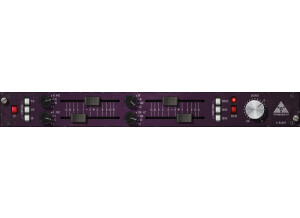
Trident® A-Range Classic Console EQ Plug-In
Egaliseur paramétrique logiciel
-
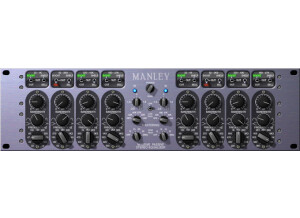
Manley Massive Passive EQ
Egaliseur paramétrique logiciel
28 € neuf (3 offres) -
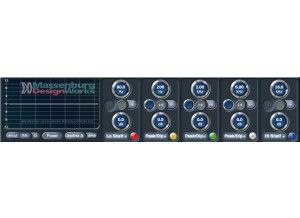
Massenburg DesignWorks MDWEQ5
Egaliseur paramétrique logiciel
-
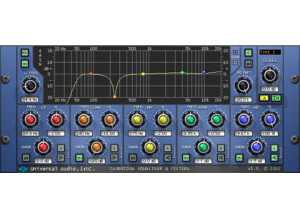
Cambridge EQ
Egaliseur paramétrique logiciel
-
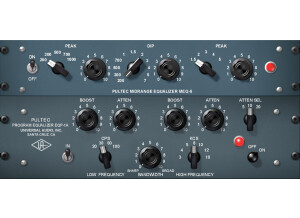
Pultec Pro EQ Plug-In
Egaliseur paramétrique logiciel
-
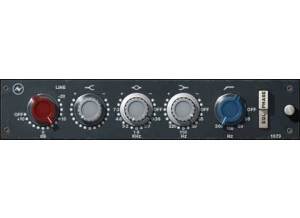
Neve 1073 EQ
Egaliseur paramétrique logiciel
-
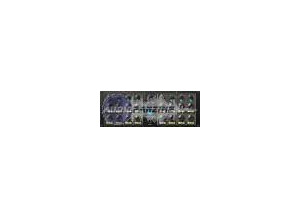
Precision EQ
Egaliseur paramétrique logiciel
-

Helios Type 69 Passive EQ
Egaliseur paramétrique logiciel
-
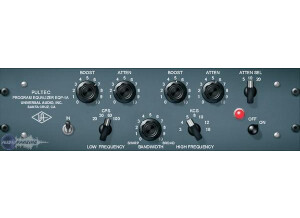
EQP-1A
Egaliseur paramétrique logiciel
-
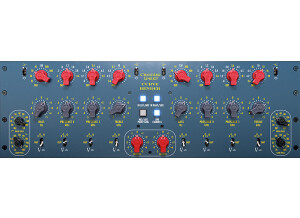
Chandler Limited Curve Bender
Egaliseur paramétrique logiciel


